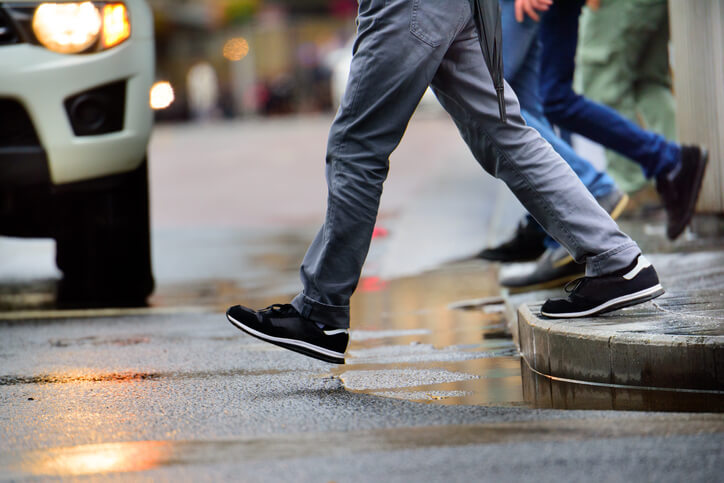When a driver strikes a pedestrian, the immediate assumption is that the driver is at fault. However, there are instances in which a pedestrian can be found liable in an accident involving a vehicle. One area in which this may arise is when a pedestrian is hit while crossing the street on a “do not walk” sign. If you are a pedestrian who has been in one of these accidents, it’s imperative that you retain a skilled Philadelphia personal injury lawyer. Cooper Schall & Levy have you covered.
Pedestrian Negligence at Crosswalks
Everyone who uses the roads, sidewalks, and crosswalks throughout our city and state owes a duty of care to everyone around them. This means conducting themselves in a reasonably safe manner, under the circumstances, so that others are not put at an unnecessary risk of injury. The duty of care extends not just to drivers but to pedestrians. Both of these groups are required to obey traffic laws designed to keep everyone safe.
Most people are familiar with what the duty of care looks like when drivers don’t follow it: some examples are disobeying traffic laws, driving while under the influence of drugs or alcohol, or failing to ensure that their vehicles are safe to drive. Not as many people understand the different ways that pedestrians can violate the duty of care. One prominent way involves illegally crossing at a crosswalk.
Pennsylvania law requires that pedestrians cross streets at designated crosswalks (when available) and obey traffic control devices. These devices include the ubiquitous “walk” and “do not walk” signs. A pedestrian who crosses the street against a traffic control signal – in other words, then the signal displays “do not walk” – could be found negligent. More generally, pedestrians should take reasonable precautions when walking through crosswalks. Deciding to enter at the last second may increase the risk that they get struck by a driver who, for whatever reason, may not see them.
How Pedestrian Negligence Affects Personal Injury Awards
If you were struck by a vehicle while crossing the street on a “do not walk” sign, you need to understand Pennsylvania’s modified comparative negligence rule. Under this rule, you can still seek damages in a personal injury case as long as you are less than 50% at fault. If your fault for the accident exceeds 50%, you can recover no damages, regardless of how bad your injuries are.
Assume that a pedestrian crossed the street while the traffic control device displayed “do not walk.” Also, assume that the driver who struck the pedestrian was speeding. A jury may determine that the pedestrian was 25% at fault and the speeding driver was 75% at fault.
In a case like this, because the pedestrian’s fault was less than 50%, he or she can still recover damages. However, those damages will be reduced by the percentage of fault. Suppose the pedestrian’s total damages are $100,000. That amount would then be reduced by 25%, or $25,000, to $75,000.
Defending Your Right to the Maximum Damages Available
If you’re a pedestrian who was hit by a vehicle during a “do not walk” sign, you can expect the automobile driver’s lawyer to argue that your damages should be reduced by the highest percentage possible. But perhaps you crossed when the signal said “walk,” meaning you shared no responsibility for the accident at all.
Either way, you need seasoned legal counsel who will zealously argue on your behalf and against any attempt by the defendant to shift blame to you or attempt to make you more responsible for the accident than you were. Give the personal injury lawyers of Cooper Schall & Levy a call today, or contact us online.



